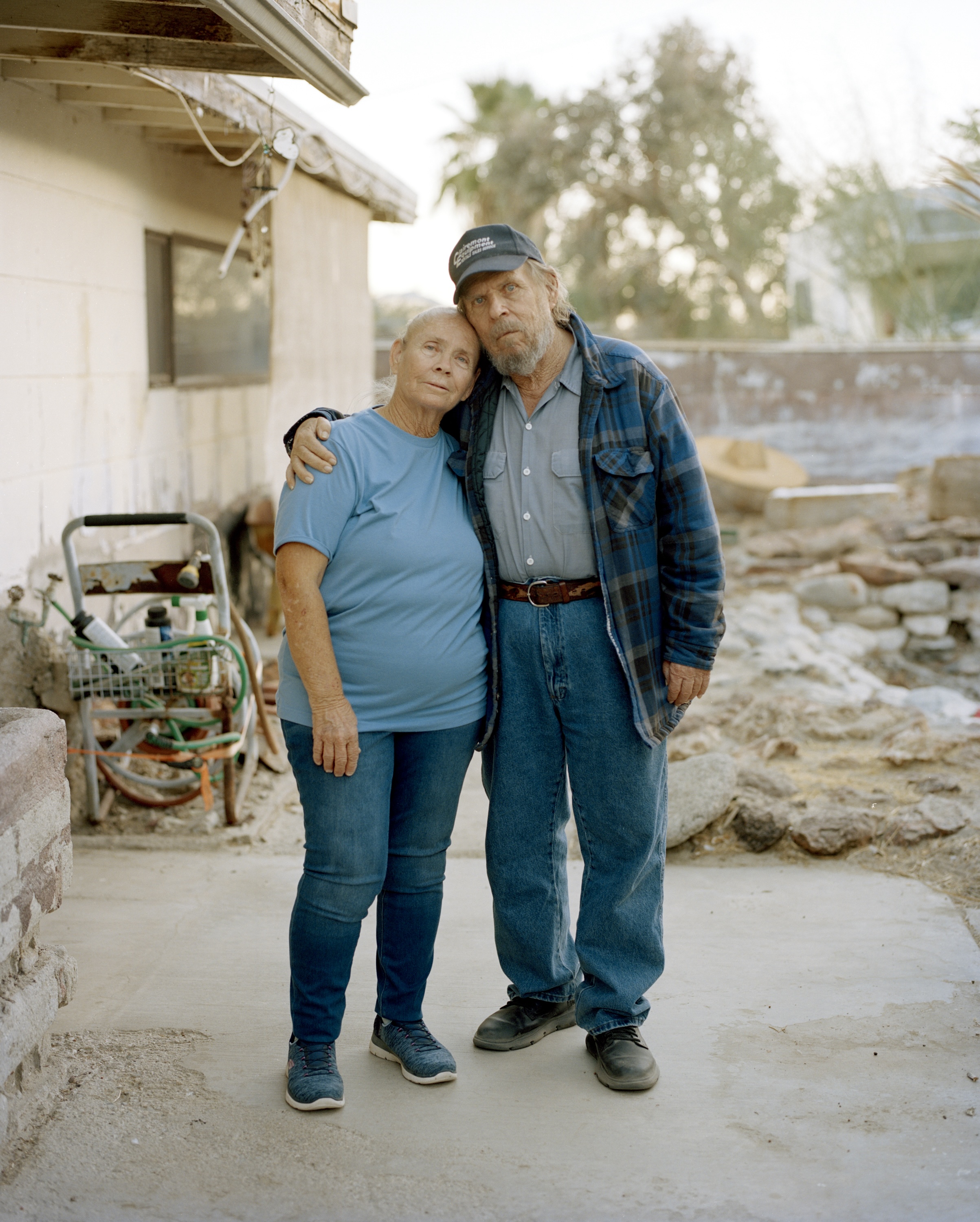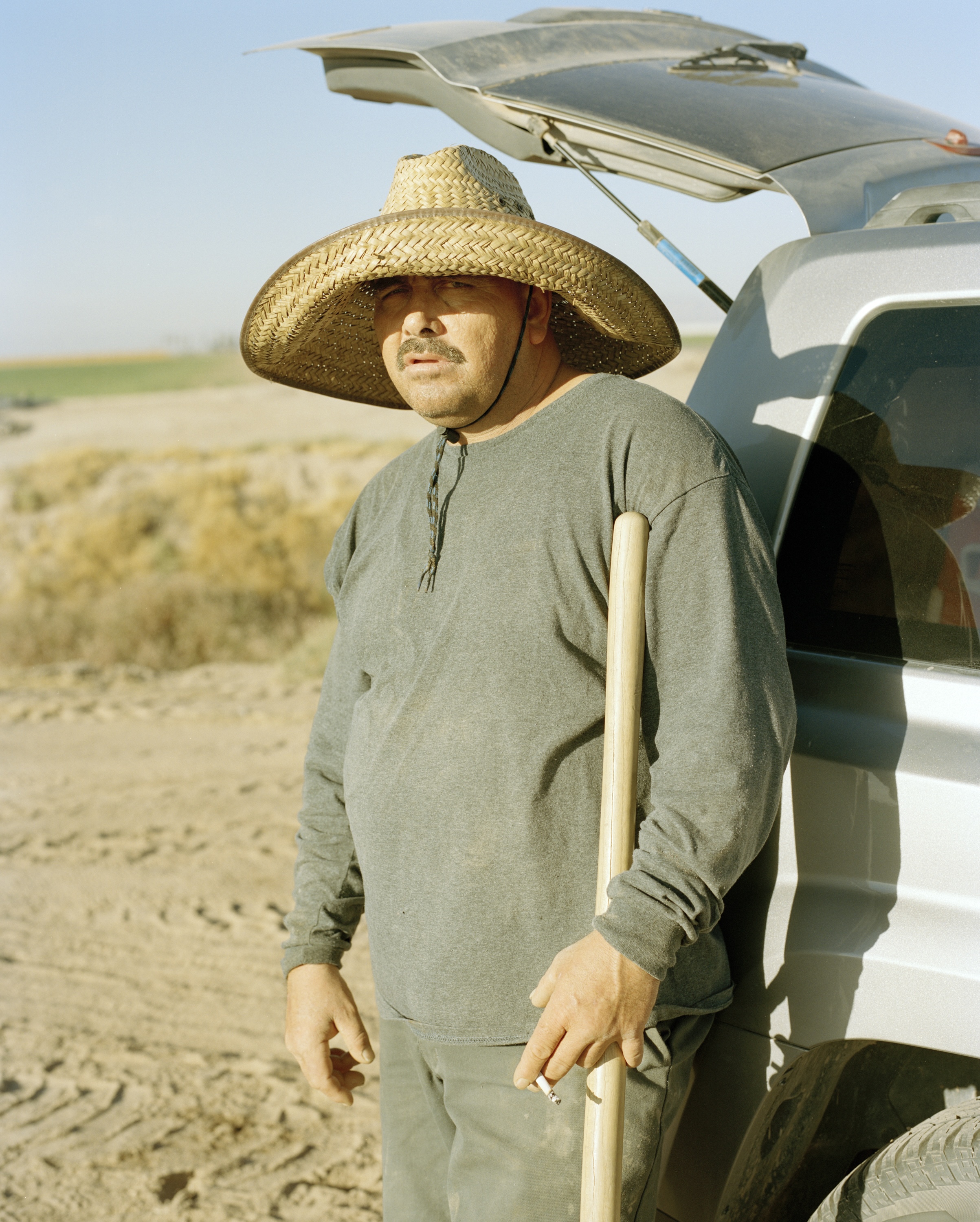All images © Scott Rossi
In Dreams on the Dying Stone, the photographer documents a desert oasis, where displaced agricultural workers once sought refuge, now on the brink of collapse
In 1900, the Imperial Land Company used water from the Colorado River to irrigate an uninhabited stretch of land in Southern California and named it Imperial Valley. Thirty years later, at the height of the great depression, photographer Dorothea Lange arrived there alongside thousands of agricultural workers fleeing from the over-farming, drought and poor agricultural practices that transformed the Great Plains into an uninhabitable dust bowl. Working on assignment for the Farm Security Administration, Lange documented the extremes of poverty and destitution in the encampments which grew up around the western United States’ new agricultural centres. Now, nearly a hundred years after Lange, Scott Rossi depicts an Imperial Valley threatened by unsustainable farming practices, water scarcity and the impacts of climate change in Dreams on the Dying Stone.
Describing his first visit to the valley, Rossi’s experience sounds not unlike what 1930s migrant workers must have felt on arriving there after days on the road: “It was quite profound the first time I saw it. As you’re driving through the desert, it appears out of nowhere like a mirage. All of a sudden, it’s just green.” Known as America’s winter salad bowl, Imperial Valley is responsible for the production of over two-thirds of the United States’ winter vegetables and uses more water than the states of Arizona and Nevada combined. It is this intensive water use, the photographer explains, which is at the core of the valley’s predicament: “They need to reduce their water use and if they do that now they’ll have to fallow crops, they won’t be able to grow as many vegetables and the agriculture industry and community will shrink as people go elsewhere to find other jobs. But if they continue using the same amount of water, it’s difficult to predict how long they can continue farming at the same scale.”
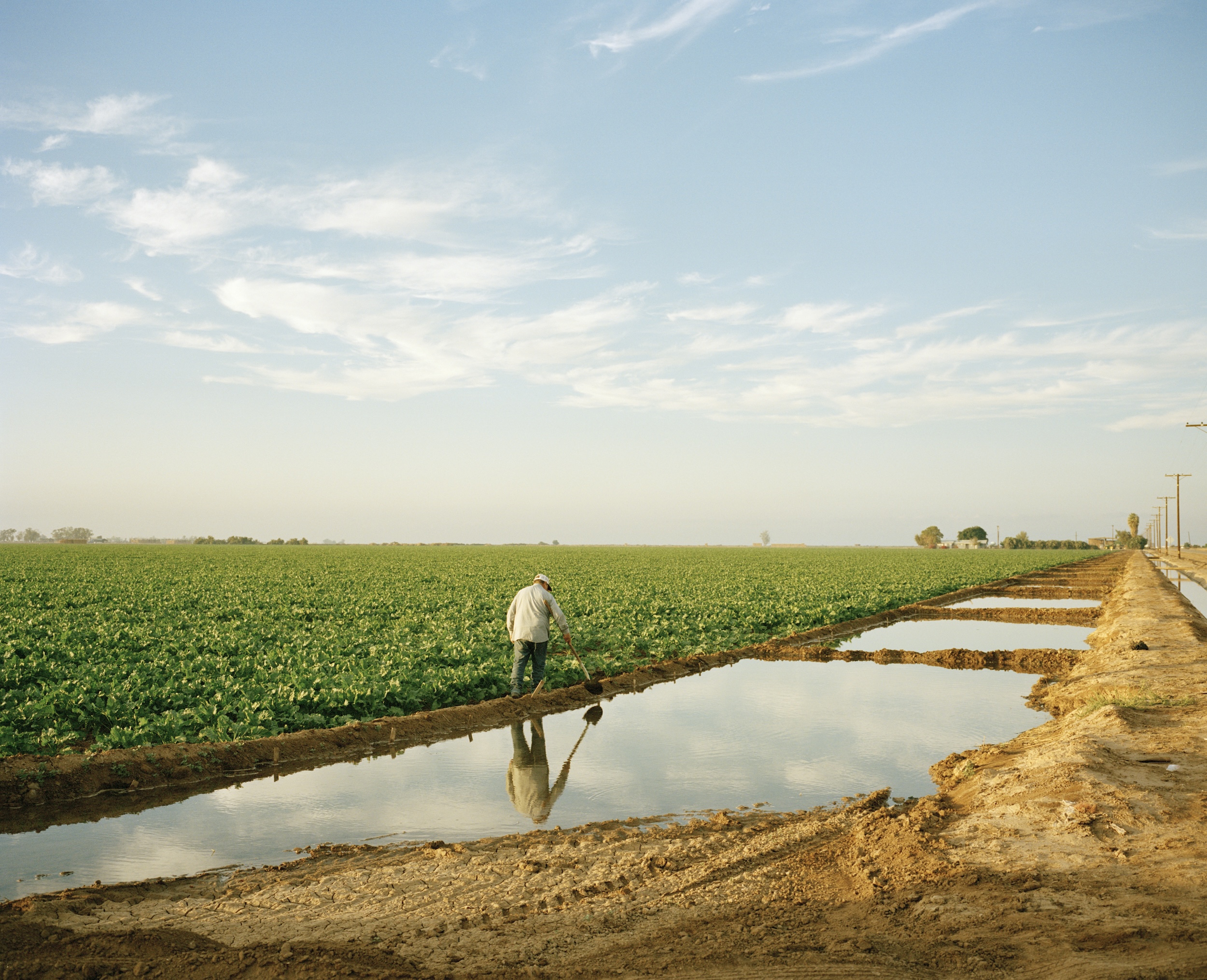
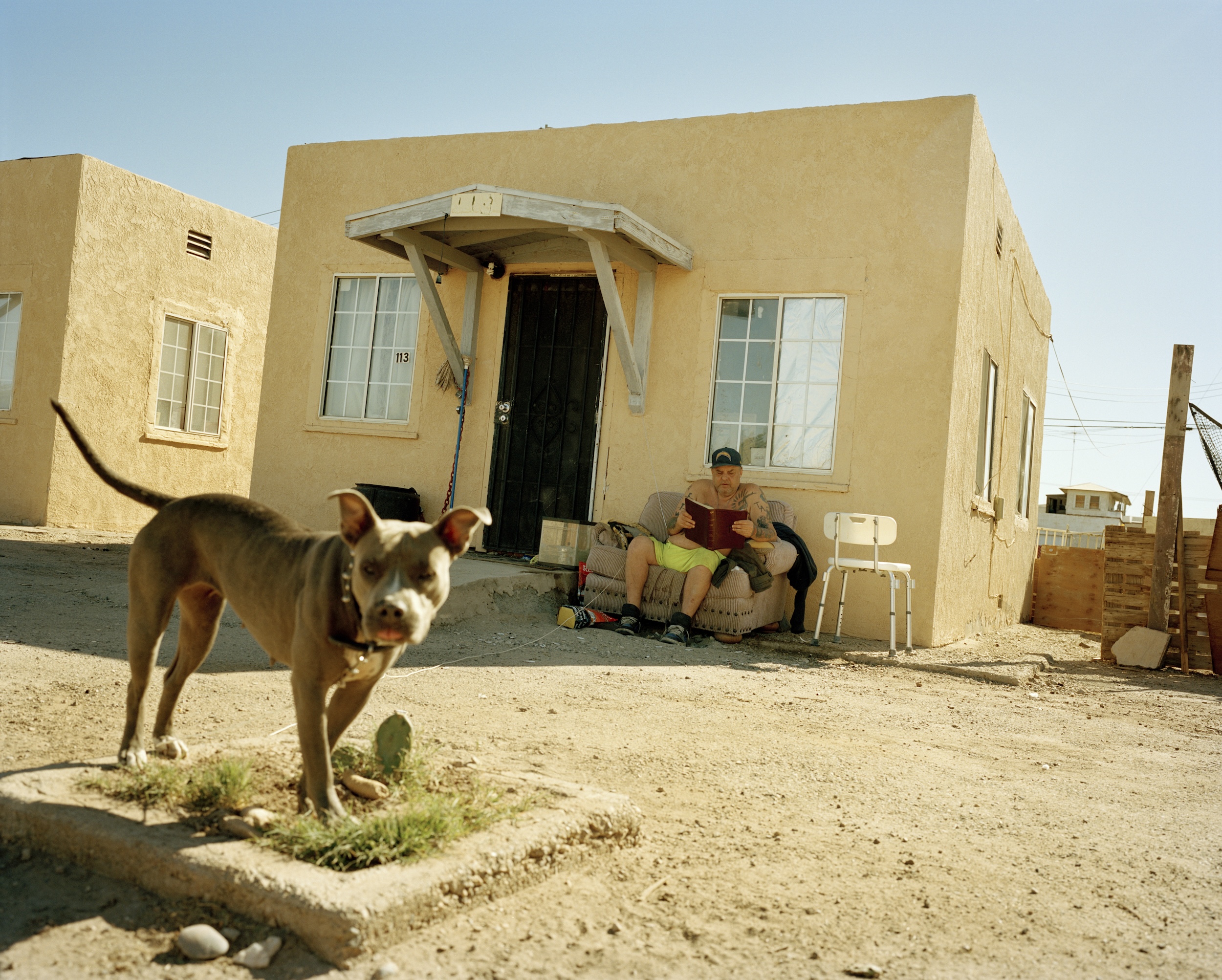
In Imperial Valley, Rossi expands, “water is like gold”, a fact he emphasises in his work. In an image of a young woman washing her horse with a hose, water droplets spray and catch the light like flecks of gold or flying sparks. Similarly, in a photograph of the All-American Canal, the largest in the Imperial Valley, the setting sun gives the water the glossy, reflective appearance of precious metal. Water is equally notable in its absence too; Rossi’s desaturated and warmly hued palette reveals a landscape which is palpably dry.
The movement of water is crucial to the geography of Rossi’s work and the valley itself. Many of his images are made in the communities that border the Salton Sea – a prehistoric lake to the north of the valley which was inadvertently refilled by runoff when the valley was first irrigated in the early 1900s. Once a popular vacation resort, a series of environmental changes instigated the sea’s decline in the 1970s. By the 2000s, more efficient use of water stopped all runoff to the sea completely and caused the shoreline to shrink, revealing a lakebed containing a toxic dust composed of ozone and particulates which, combined with exhaust fumes, pesticides plumes and factory emissions, creates a haze which hangs over communities in the valley. Rossi describes how “you can actually feel your skin and eyes burning when you’re on the shore of the lake”.
Despite this, there are still communities living around the lake. In fact, Rossi explains, “because you can buy a lot for $2000, people are actively moving to the area”. One such resident is Doris Dinsmoor, who Rossi photographs in her home of 48 years in Desert Shores, located on the western shore of the Salton Sea. Rossi’s portrait reveals the contradiction between the bucolic fantasies of agricultural life and the reality of the valley. His subject sits at rest on her sofa surrounded by ornaments, artworks, windchimes, a sword, and above her head a print depicting a verdant farmhouse scene. The photograph has the same slightly yellow hue as Rossi’s other images, which now seems unnerving in the context of an interior. A vent in the top right corner of the image is framed by an ominous dark yellow stain.

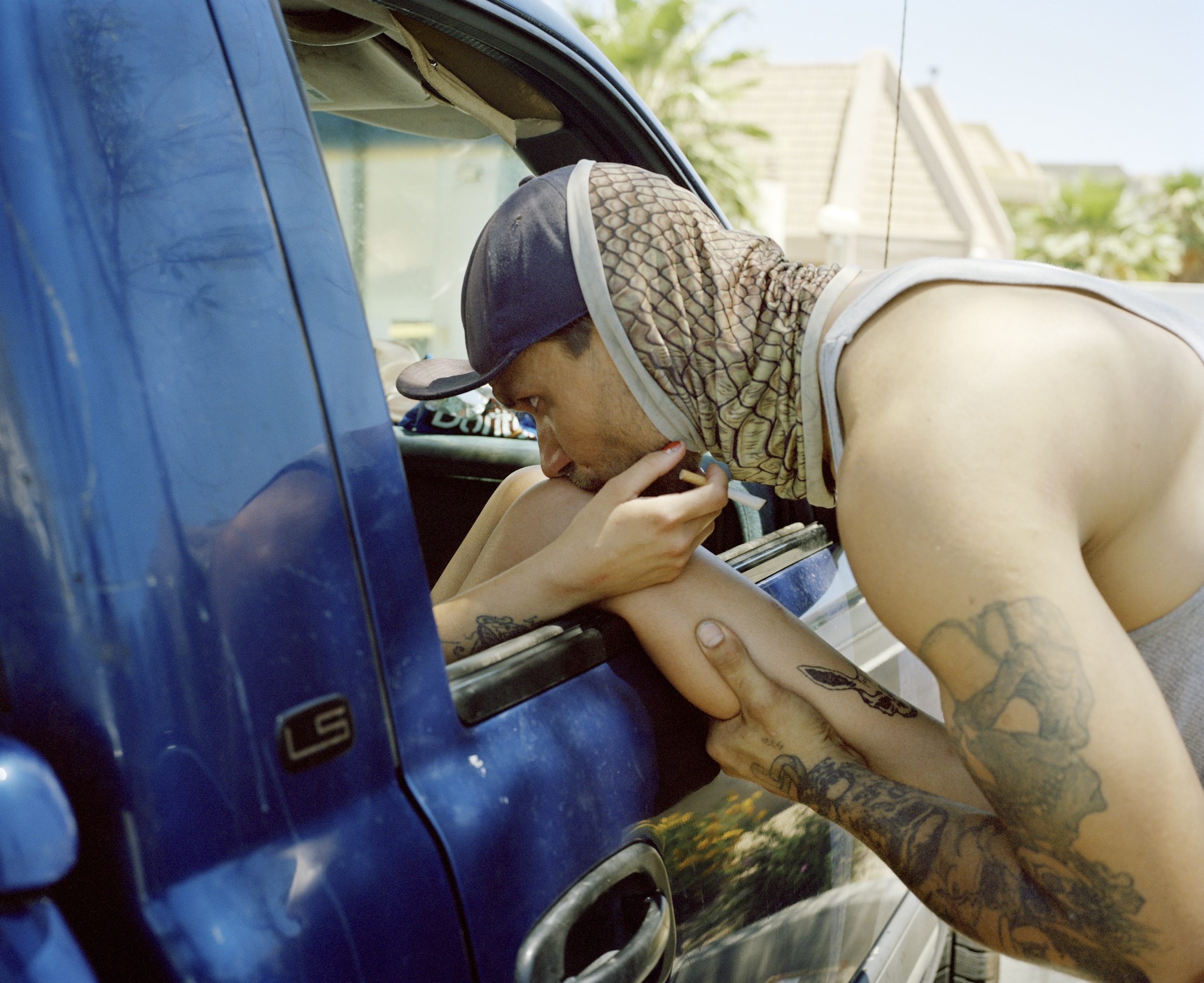
In another image, Rossi photographs a young boy, Alexis, playing in a barely full paddling pool in the yard of his family’s trailer on the shores of the Salton Sea. The trailer, its awning, gutters, door, the air conditioning unit and an ornamental sun with pouting lips – which resembles the Incan sun god Inti – are painted uniformly beige, giving them the appearance of having been coated by the dust which Rossi depicts in earlier photographs. Above him, a print of Santa Maria, echoing Lange’s Migrant Mother, averts her gaze from the camera.
Fantasies of the West as a place where the American ideals of individual liberty, economic prosperity and ultimately happiness could be pursued seem far from the reality of the Imperial Valley. Rossi remarks on the huge levels of deprivation which exist there: “22% of people live below the poverty line. Lots of people who live in the Imperial Valley aren’t there because they like it. They’re there because of the opportunity and because it’s dirt cheap to live there. Many people I’ve met are from other parts of California where they can no longer afford to live.” In one photograph, Rossi pictures Sydney, a recently unemployed agricultural worker, kissing the leg of his partner Kourtni, which hangs out of the window of the car they both live in.
In another portrait, Rossi depicts farm worker Raul in Calexico on his way home to Mexicali, one of an estimated 15,000 day labourers who cross the Mexico-US border to work in the valley every day. This kind of insecure and casual labour seems foundational to Imperial Valley, which has a history of conflict between workers’ unions and the agro-industrial corporations that operate there. Since the beginning of Trump’s second term as president, this instability has been compounded by the looming threat of aggressive ICE raids, which are already sweeping nearby agricultural regions like the much larger Central and San Fernando valleys.
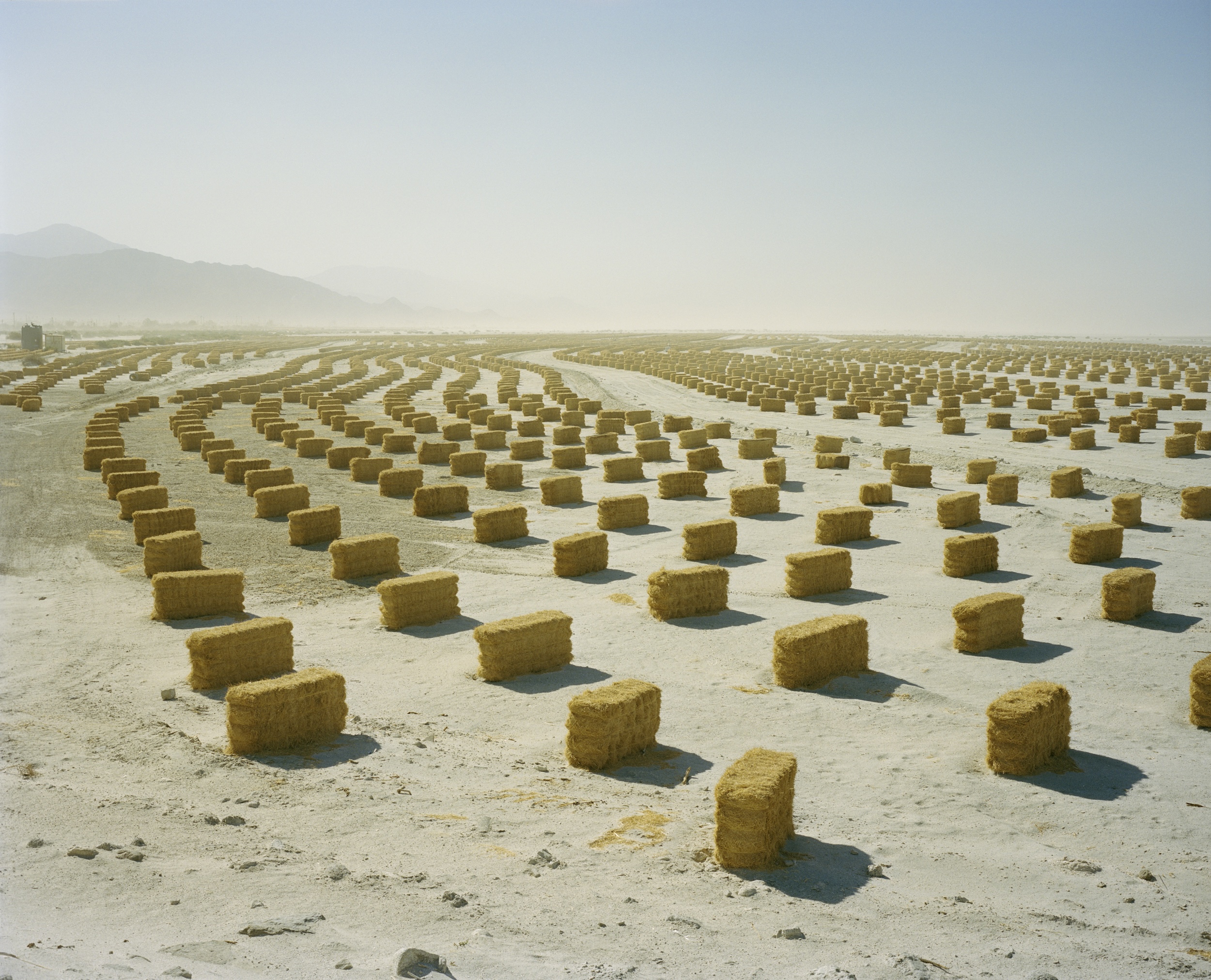
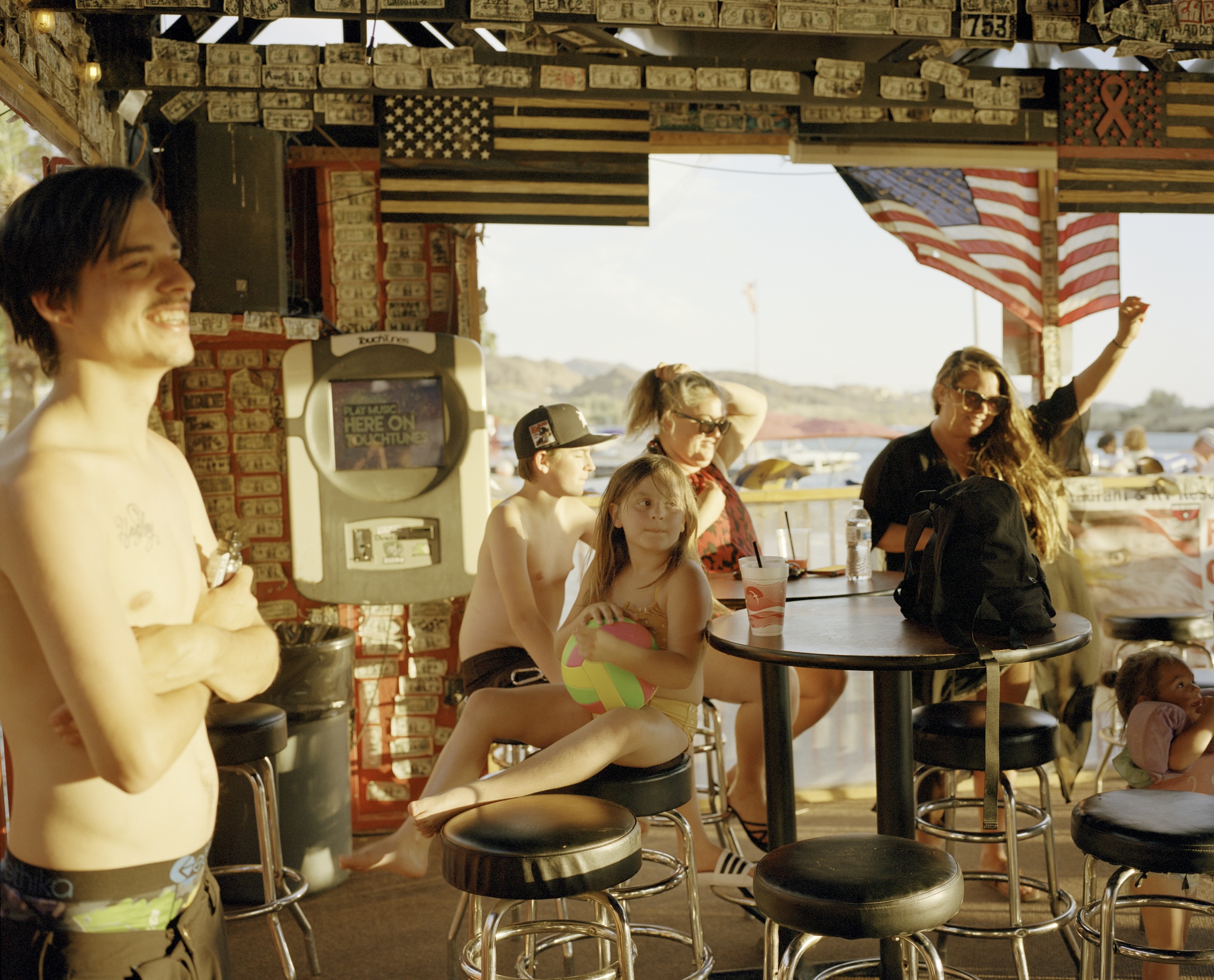

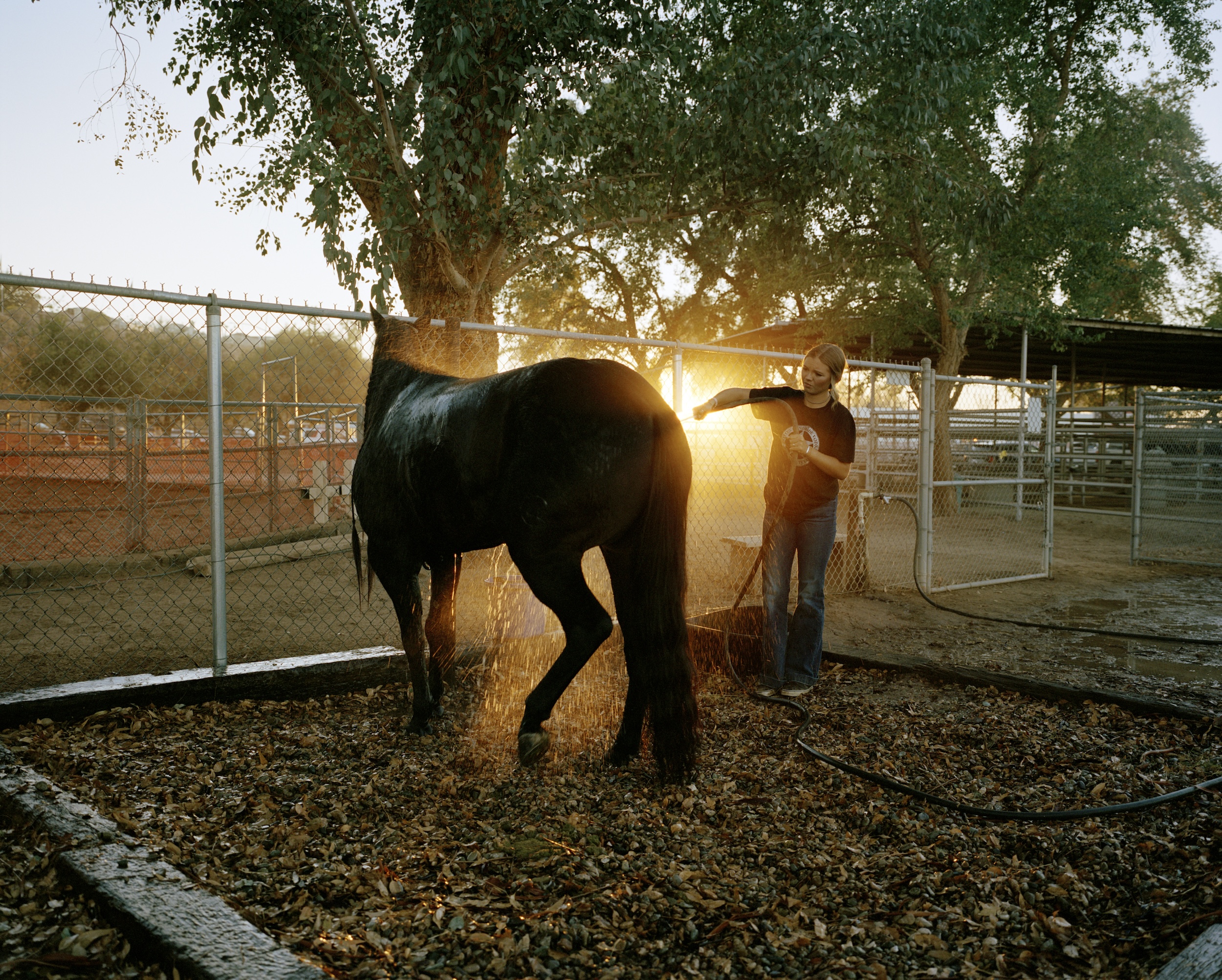
The uncertain future of farming in the valley has implications for almost all its residents. In Rossi’s own words, “everyone you meet in the valley is connected to agriculture.” It’s the third largest employer in the surrounding county, trailing only the public sector and healthcare. Under Trump’s administration, the pressure to rewrite the 1922 Colorado River Pact – which overestimated the river’s annual flows and ignored the seniority rights of indigenous groups – has diminished. The promised reinvigoration of the local economy by the discovery of lithium deposits in the area now seems unlikely following the President’s rescinding of tax and regulatory benefits for electric vehicles. It’s difficult to imagine any scenario other than the valley’s continued decline.
Rossi’s images of this decline might seem to echo Dorothea Lange’s FSA photographs, documenting how the same kinds of unsustainable agricultural practices which forced Lange’s subjects westward have now led to the Imperial Valley’s own demise. On closer inspection, however, what Lange and Rossi share is more political. In an interview towards the end of her life Lange said of her work, “it’s not pictorial illustration, it’s evidence. It’s a record of human experience.” After nearly a century of exploitation, Imperial Valley’s fate seems sealed. Rossi’s work is making a record of it, of the people who lived and worked there and the impact of the exploitation of workers and the earth on human life.
